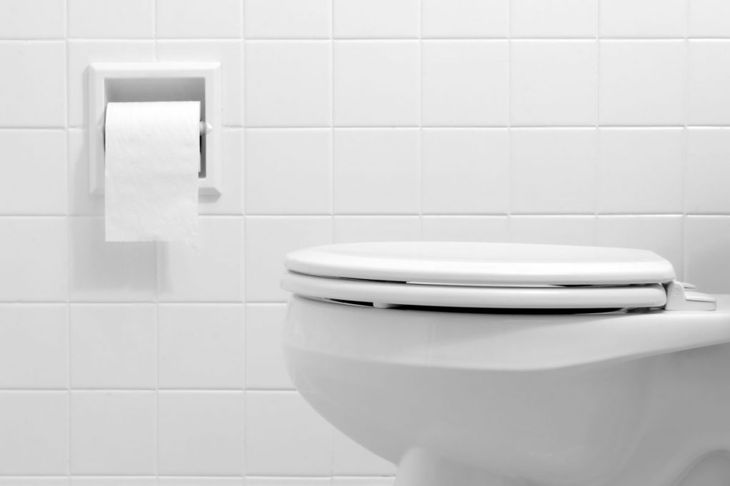Appendicitis is a fairly common but serious condition that occurs when the appendix becomes infected or inflamed. The early symptoms are often incredibly similar to those of stomach flu, and as such, it is easy to dismiss stomach pains and indigestion. This can be an issue because appendicitis is potentially fatal without treatment. It’s important to know how to differentiate between a stomach ache and serious illnesses such as appendicitis.
Urination Pain
Stomach aches and stomach flu don’t usually affect the body beyond the digestive system. However, appendicitis can cause pain and cramps through all of the muscles in the abdomen. In around 50 percent of people, this pain manifests during urination. The pain may be so severe that standing while urinating becomes impossible. Some people avoid drinking liquids so they urinate less frequently, which can lead to dehydration.
Blockages
Stomach aches and stomach flu often involve blockages and constipation. Appendicitis can cause extremely painful blockages that are typically more distinct than those of the common flu. People with appendicitis may notice they are incapable of passing gas. Over time, they may experience additional abdominal pain as the gas accumulates. A more common symptom is constipation.
Pain Movement
One of the most unique symptoms of appendicitis is migrating pain. When a person first experiences pain as a result of appendicitis, it typically originates at the navel or upper area of the belly. This pain may be dull a minor ache, hence the assumption that one has a stomach ache. Over time, the pain migrates to the lower right area of the abdomen and becomes more severe.
Blood
Another key symptom that distinguishes appendicitis from a stomach ache is the presence of blood in bodily excretions. It is somewhat common for stomach pain to act as a precursor to bowel movements in many illnesses. However, if the stool is bloody following a period of stomach pain, it is likely a symptom of a condition such as appendicitis. Typically, bloody stool is black or dark in color rather than red. Blood may also appear in other bodily fluids such as vomit.
Vomit Coloration
Though many stomach conditions cause vomiting, it is rare for these conditions to affect the color of the liquid. Beyond the presence of blood, appendicitis can render vomit an odd green color, due to bile in the stomach. This is evidence of torsion of the stomach or intestines — twisting or a blockage — and is a sign that medical attention is immediately necessary.
Abdominal Distension
Constipation or other blockages sometimes develop because of minor stomach conditions. However, blockages that appendicitis causes are typically more severe and longer-lasting. If a blockage lasts for too long, it can result in a ballooning effect in the abdomen. This abdominal distension is a buildup of fecal matter or gastric gasses that the body can’t expel. Pain, nausea, and cramping often accompany distension. In extreme cases, the buildup of substances may place pressure on the esophagus or lungs and cause shortness of breath.
Sensitive to Touch
One way to tell appendicitis apart from a common stomach ache is to press on the abdomen or stomach. Though stomach aches are painful, slight pressure typically won’t cause additional pain. However, appendicitis can cause inflammation of the peritoneal lining of the abdominal cavity, making the area sensitive.
Fevers
Generally, minor stomach conditions don’t cause fever, but the symptom is a common warning sign of appendicitis. A fever of 99 to 102 degrees Fahrenheit in combination with any other appendicitis symptoms is a sign of severe appendicitis. In most cases, a temperature above 101 degrees indicates the appendix has burst, a medical emergency. Fevers that also feature elevated heart rates can also point to a rupture.
Specific Movements that Offer Relief
Many people with stomach aches feel the need to cradle their stomachs as a relieving response to the cramping or pain. Appendicitis has similar unique movements. If a person is walking while hunched over and holding their stomach, the condition is more likely to be appendicitis than a stomach ache. Additionally, people with appendicitis often lie on their side with their legs drawn towards their stomach. This is a unique position that indicates the presence of appendicitis.
Order of Symptoms
In some instances, appendicitis and stomach flu symptoms may seem almost identical. In such cases, the distinction may be made by considering the order in which the symptoms appear. Generally, abdominal pain is the first symptom of appendicitis, whereas it may occur later on in stomach flu. In addition, appendicitis worsens quickly, with most symptoms appearing in the first 24 hours. If there are many symptoms developing over a short period, it is likely that the cause is appendicitis and not a stomach ache or flu.

 Home
Home Health
Health Diet & Nutrition
Diet & Nutrition Living Well
Living Well More
More




















